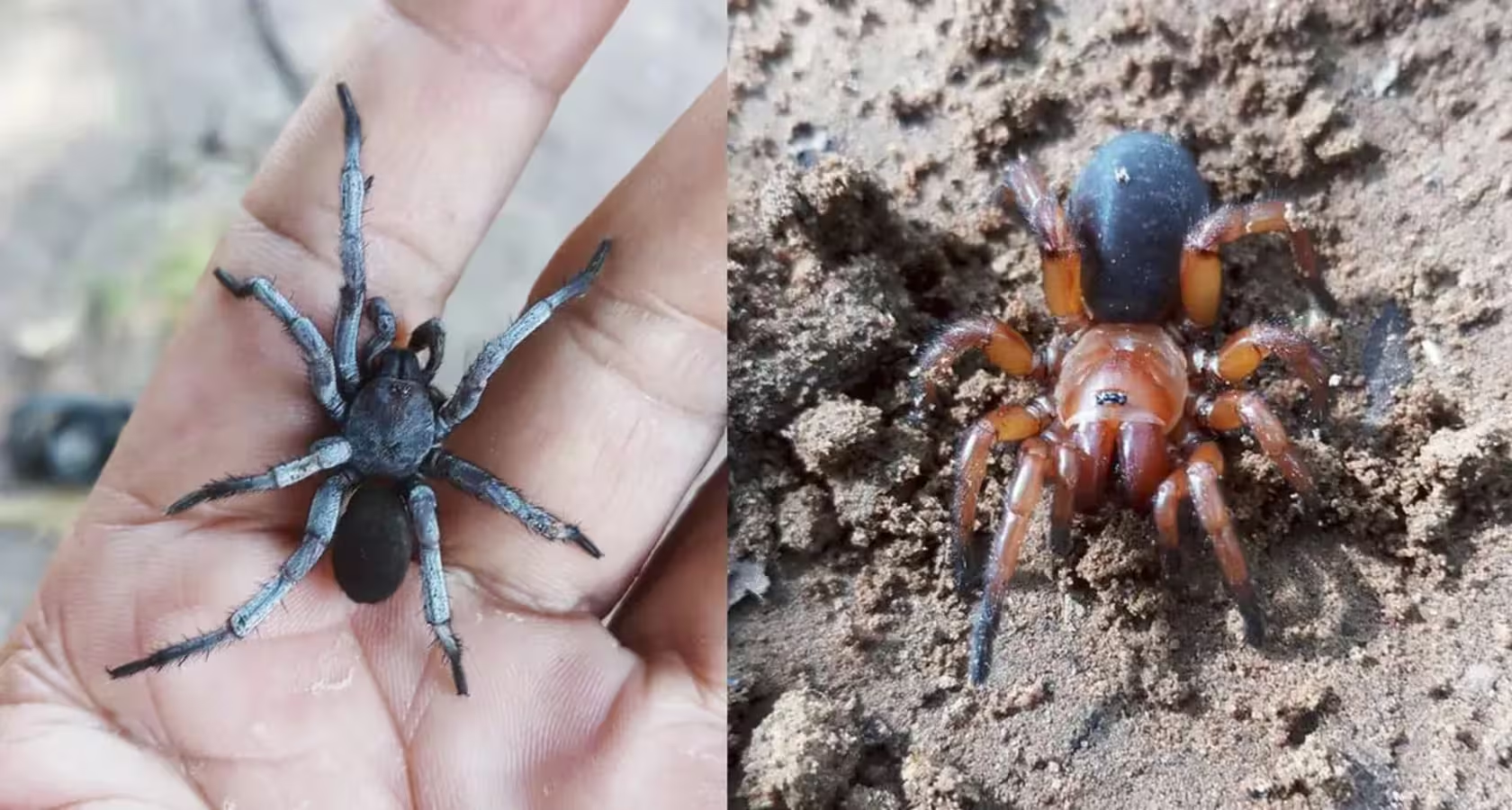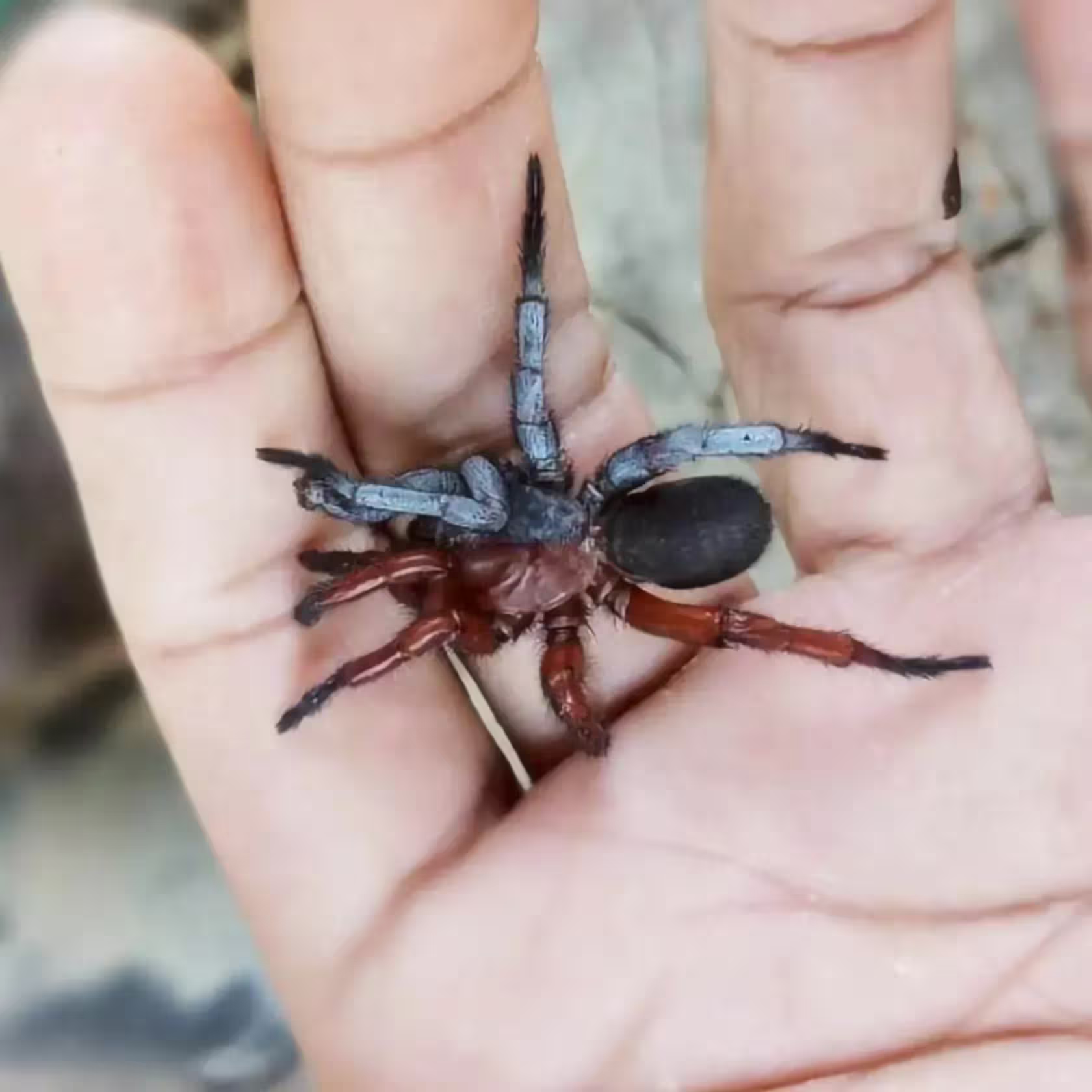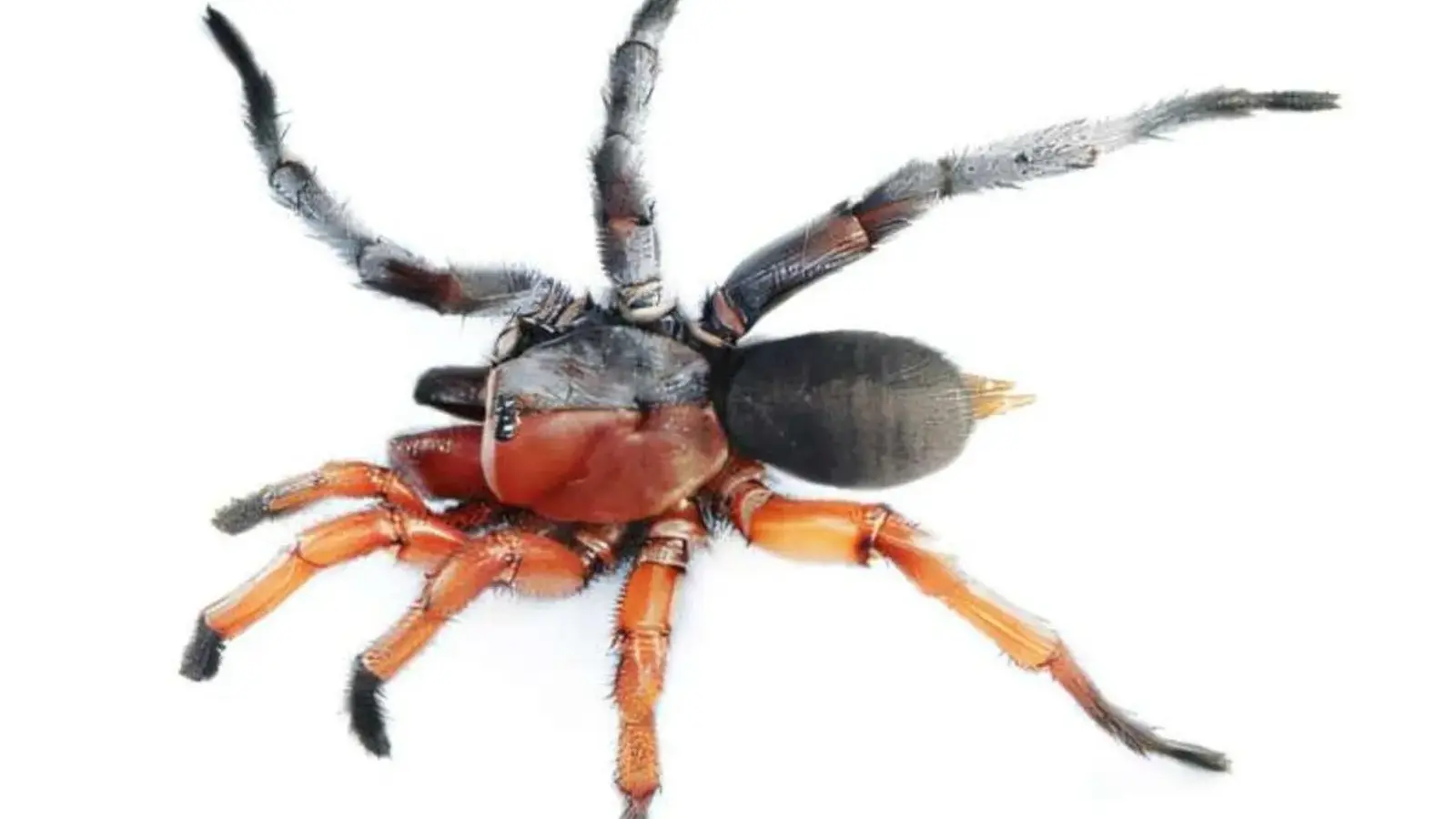6 Minutes
Rare bilateral gynandromorph spider discovered in Thailand
In a remote forested area of western Thailand, researchers from Chulalongkorn University and Ubon Ratchathani University documented a new and striking spider species whose body shows a near-perfect split between male and female characteristics. The specimen displays a vertical division: one side bears the coloration and morphological traits typical of males, while the other side shows features associated with females. This condition, known as bilateral gynandromorphism, is an extremely rare form of sexual mosaicism in animals and has drawn attention from arachnologists and developmental biologists worldwide.
The international science outlet IFLScience reported the find after the team surveyed woodland in Phanom Thuan district. Observers noted that female individuals of the new species are generally brownish-orange, whereas males are predominantly pale or white with dark speckles. In the captured gynandromorph specimen, one half is deep orange and the other half is white with peppered markings, producing a visually dramatic example of sexual dimorphism split down the body.
What is bilateral gynandromorphism and how does it arise?
Bilateral gynandromorphism is a developmental anomaly in which an individual contains groups of male and female cells that are segregated to opposite sides of the body, producing a literal half-male, half-female organism. In genetic and developmental terms, the phenomenon is linked to errors during the earliest cell divisions of the embryo.

Basic genetics and embryonic timing
Biological sex is determined by sex chromosomes (commonly X and Y in many animals; Z and W in birds and some insects). Normally, after fertilization the zygote’s chromosomes duplicate and early mitotic divisions distribute chromosomal complements evenly so that all cells share the same sex chromosome constitution. If a missegregation occurs during a very early mitotic division—creating daughter cells with different sex chromosome sets—subsequent lineages derived from those early cells can carry different sex identities. If this error happens at the first or one of the first cell divisions, the resulting anatomy can be bilaterally partitioned: one side dominated by cells with a male chromosome set and the other by female cells.
Although bilateral gynandromorphism is rare, it has been documented previously in butterflies, birds, crustaceans, and other insects and arachnids. Because the condition reveals how sex-specific traits are distributed during development, such specimens provide unique natural experiments for studying sexual differentiation and tissue-specific gene expression.
Discovery, taxonomy, and scientific context
The research team assigned the new species the binomial Damarchus inazuma. The specific name references a fictional character from the Japanese manga One Piece, chosen for its thematic link to gender change and metamorphosis in popular culture. The full description and diagnostic details were published in the peer-reviewed journal Zootaxa, where the authors provide morphological measurements, diagnostic illustrations, and comparisons with related species.

Field collection and morphological analysis followed standard arachnological protocols: specimens were photographed, preserved, and examined under microscopy to document gonopore arrangement, pedipalp structure (critical for male identification), and abdominal and carapace coloration. The gynandromorph offered direct contrast between male and female traits within a single organism, allowing researchers to compare trait expression side-by-side.
Implications for arachnid biology and future research
This discovery has several implications. First, it provides a vivid example of how developmental errors can illuminate the genetic and cellular bases of sexual dimorphism. Second, recording a new species expands taxonomic knowledge and biodiversity records for Thailand’s forest ecosystems. Third, well-documented gynandromorphs can guide genetic and molecular follow-up work—e.g., targeted sequencing of left and right tissues—to identify chromosomal and gene expression differences underlying the split phenotype.
Researchers noted that such specimens are natural case studies for investigating how sex-specific traits are patterned across tissues, and how local cell populations interpret chromosomal sex signals during development. The team emphasized continued survey work in underexplored habitats and recommended genetic analyses to confirm the chromosomal basis of the bilateral condition in this specimen.
Publication and attribution
The formal species description appears in Zootaxa. Photographs accompanying the paper were credited to Surin Limrudee and are included in the field report and publication. The discovery underscores how targeted field surveys combined with careful morphological documentation remain essential tools for biodiversity science.
Expert Insight
"Bilateral gynandromorphs are rare windows into developmental biology," said Dr. A. N. (a fictional developmental biologist for contextual commentary). "When a specimen shows such a clean left-right partition of sex-specific traits, it becomes possible to test hypotheses about cell lineage, gene regulation, and how sexual characteristics are specified at the tissue level." The researcher added that future genomic comparisons of tissue from each side could confirm whether chromosomal missegregation or localized somatic mutation produced the condition.
Conclusion
The find of Damarchus inazuma in Thailand is notable both because it adds a new species to arachnid taxonomy and because the bilateral gynandromorph specimen furnishes a rare natural experiment for studies of sexual differentiation. Continued field research, coupled with molecular follow-up, will help clarify the developmental genetics behind such striking natural anomalies.
Comments
skyspin
Feels a bit overhyped, the One Piece name is odd, haha. Still that pic is insane, hope they do left vs right sequencing 🙂
Marius
Seen this kinda thing in butterflies, still blows my mind. The split looks almost surgical. if that's real, labs will go nuts
atomwave
Is this even real? One sample doesn't prove the mechanism, id want chromosomal data — could be somatic mosaicism instead
bioNix
Wow, that half-male half-female spider is wild! Nature keeps making geniuses of chance… wanna see tissue seq from each side, asap


Leave a Comment